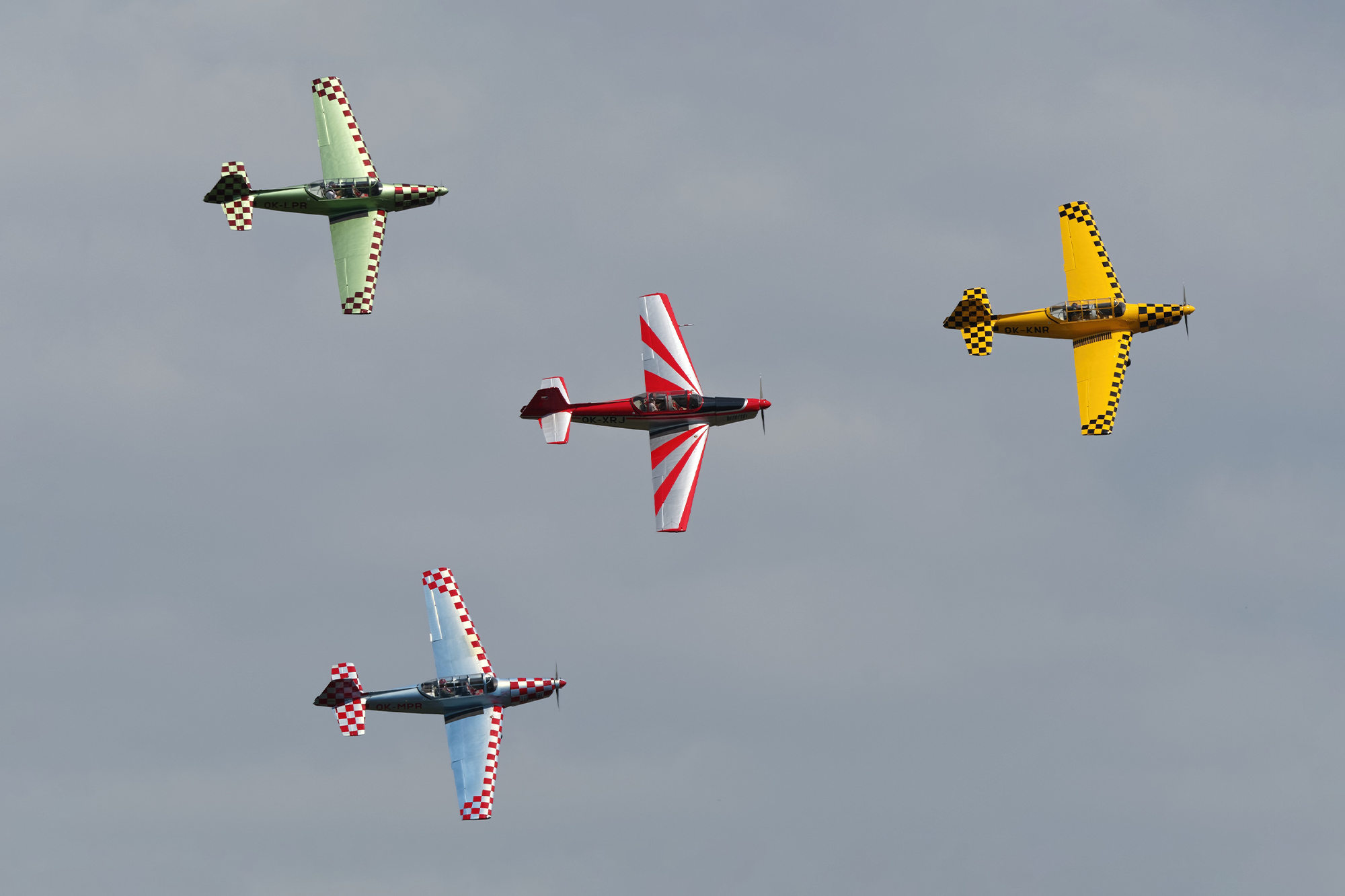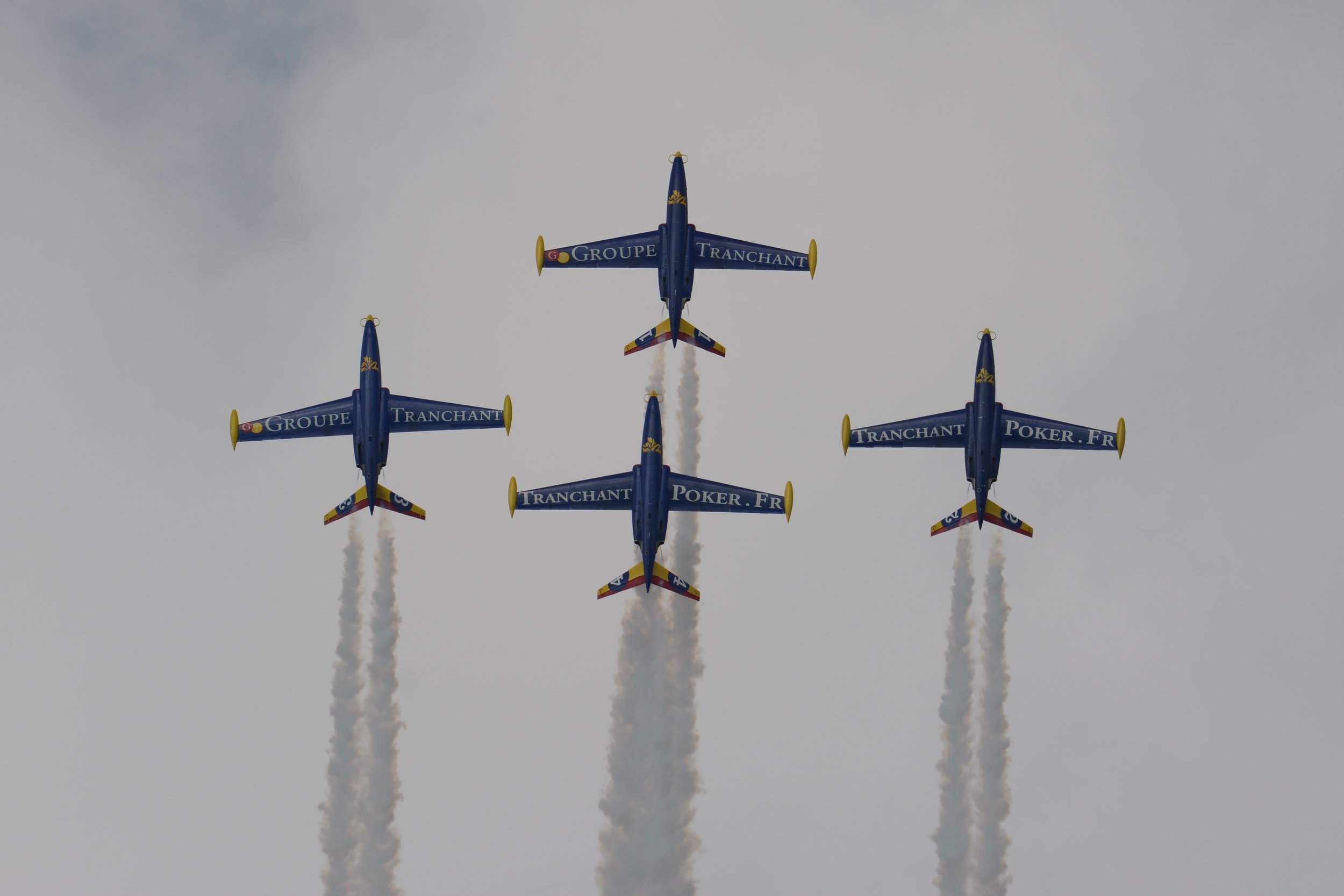Tiger Nine
Country
UK
Size
9 Aircraft
Base
White Waltham Airfield
The Tiger Nine is an internationally renowned aerial display team, known for their breathtaking performances in the iconic British de Havilland DH.82 Tiger Moth bi-planes. Based at the historic White Waltham Airfield in Berkshire, England, the team wows audiences with their precision flying skills and stunning formations. While a familiar sight at numerous British airshows, their popularity extends beyond the UK, with appearances reaching as far as Switzerland. The team's repertoire features awe-inspiring nine-ship formation flypasts, dynamic opposition passes, and exhilarating aerial breaks that never fail to captivate spectators.
The team, originally founded in the summer of 2005, came into existence in response to a request for a flypast consisting of nine Tiger Moths during the 25th de Havilland Moth Club rally at Woburn Abbey. Comprised of skilled individuals from the former Diamond Nine group, the new team, under the leadership of Jeff Milsom, devoted themselves to rigorous practice sessions. These were crucial in order to meet the goal of executing the challenging large-close formation flypast at Woburn. The team's efforts bore fruit as they succeeded in delivering a stellar performance that was met with great enthusiasm by the Club members. Encouraged by this accomplishment, the team set about crafting their complete display routine for the upcoming season.
| Back to Top |
de Havilland Tiger Moth
The de Havilland DH.82 Tiger Moth is a 1930s British biplane designed by Geoffrey de Havilland and built by the de Havilland Aircraft Company. It was operated by the Royal Air Force (RAF) and many other operators as a primary trainer aircraft. In addition to the type's principal use for ab-initio training, the Second World War saw RAF Tiger Moths operating in other capacities, including maritime surveillance and defensive anti-invasion preparations; some aircraft were even outfitted to function as armed light bombers.
The Tiger Moth remained in service with the RAF until it was succeeded and replaced by the de Havilland Chipmunk during the early 1950s. Many of the military surplus aircraft subsequently entered into civil operation. Many nations have used the Tiger Moth in both military and civil applications, and it remains in widespread use as a recreational aircraft in several countries. It is still occasionally used as a primary training aircraft, particularly for those pilots wanting to gain experience before moving on to other tailwheel aircraft. Many Tiger Moths are now employed by various companies offering trial lesson experiences. The de Havilland Moth club, founded in 1975, is now an owners' association offering a mutual club and technical support.
| Back to Top |












| Back to Top |

































